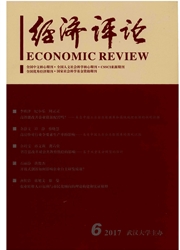

 中文摘要:
中文摘要:
本文将中国在1997—2007年期间实施的铁路提速视为交通基础设施质量改善的一次自然实验,选取京广线和京沪线作为铁路提速代表,构造了城市一级面板数据,利用倍差法考察了其对城市可达性及经济增长的影响。本文的主要结论有以下几点:第一,整个铁路提速期间,提速使其沿途提速站点人均GDP提高约7.8个百分点;同时,铁路提速对经济增长的促进作用具有叠加效应。第二,铁路提速对城市区域内可达性和区域间可达性的改善显著促进了经济增长,并且区域间可达性改善对经济增长的促进作用更加明显。第三,在铁路提速的推动下,上海和广州作为区域经济增长引擎的作用较北京更加显著。第四,铁路提速对第二产业的促进作用较第三产业更为显著。
 英文摘要:
英文摘要:
Beginning in 1997, China implemented a six- round campaign to accelerate train service, known as the "China Railway Speed - Up Campaign". In this paper,we take the railway speed -up as a natural experiment that improves the quality of transportation infrastructure. The two main railway lines, Beijing- Guangzhou line( Jingguang Xian ) and Beijing -Shanghai line( Jinghu Xian) ,have been selected as representative samples of the railway upgrades. The paper constructs a panel data including treatment and control groups at city - level, and applies difference - in - difference estimation to explore the impact of China' s railway speed upgrades on the urban accessibility and economic growth. The main conclusions are as follows : First, the average per capita GDP has been increased about 7.8 percentage by the railway speed upgrades. Second,the improvements of urban regional and national accessibility driven by the railway speed upgrades play a significant role in promoting economic growth, and the latter plays a stronger role. Third, driven by the railway speed upgrades,the roles of Shanghai and Guangzhou as regional engine for economic growth are more significant than Beijing. Fourth, the impact of railway speed upgrades on the secondary industry is more significant than that on tertiary industry.
 同期刊论文项目
同期刊论文项目
 同项目期刊论文
同项目期刊论文
 期刊信息
期刊信息
